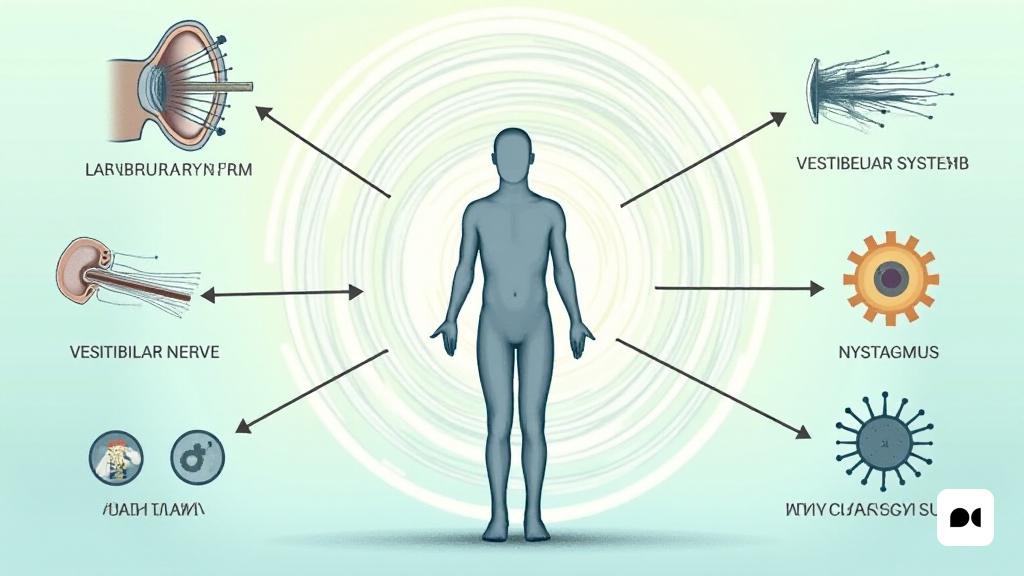What is the vertigo and how it differs from dizziness
Vertigo is an experience that can be puzzling and disturbing. It is described as a sense of movement or rotation, either from the body or the world around us. In contrast, dizziness is characterized by a lack of stability. It is crucial to understand that while dizziness can lead to a general sense of insecurity, vertigo involves a more intense illusion of movement.
Mechanisms of human balance
Our body maintains balance thanks to the collaboration of three main systems: visual, musculoskeletal and vestibular. When one of these systems has dysfunctions, it may result in symptoms of vertigo or instability. The vestibular system, located in the inner ear, is especially vulnerable to alterations that can generate wrong information on the brain about our position.
Type of vertigo and its causes
Peripheral vertigo
The peripheral vertigo occurs when there is a problem in the vestibular system, either at the level of the labyrinth or the vestibular nerve. Symptoms are usually intense and may include nausea, sweating and even hearing loss. Among the most common conditions that cause this type of vertigo are the benign paroxysmal positional vertigo (VPPB), Ménière’s disease and vestibular neuronitis.
Central
In contrast, central vertigo is the result of injuries in the brain. Symptoms may include double vision and balance difficulties, although they are usually less intense than in the case of peripheral vertigo. The causes of this type of vertigo include brain tumors and cerebrovascular accidents.
Diagnostic process of vertigo
The diagnosis of vertigo involves a thorough clinical examination, which includes otoscopy and examination of eye mobility. The presence of nystagmus, an involuntary eye movement, can help to differentiate between peripheral and central vertigo. In addition, audition and image tests such as magnetic resonance imaging can be used.
Effective treatment strategies
The treatment of vertigo varies according to their cause and gravity. During the crises, vestibular sedative medication can be given, while in later stages we can recommend rehabilitation exercises. In more severe cases, surgical intervention may be necessary, such as labirecttectomy, or alternative therapies such as transtimpanic injections.
Final reflections on vertigo
Vertigo is a complex condition that can significantly affect a person’s quality of life. Understanding its causes and treatment options is essential to handle this condition. With advances in diagnosis and treatment, patients can expect a more positive prognosis and better control of their symptoms.

